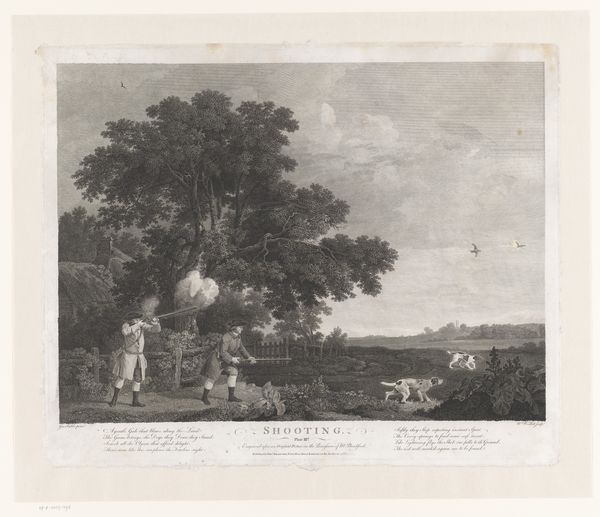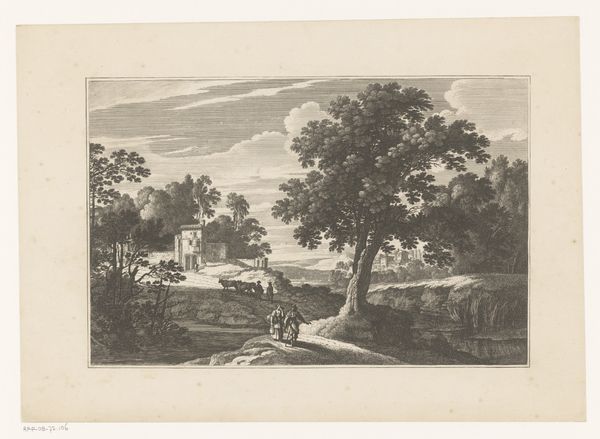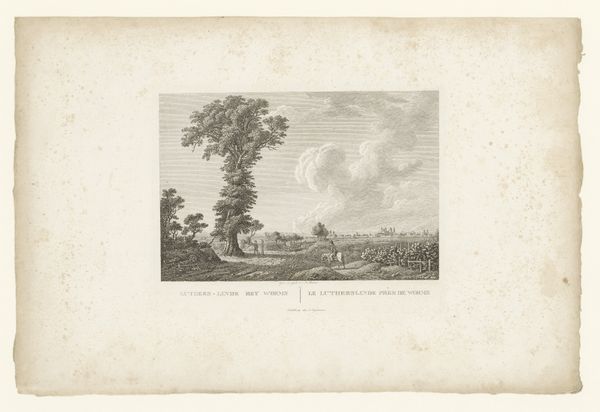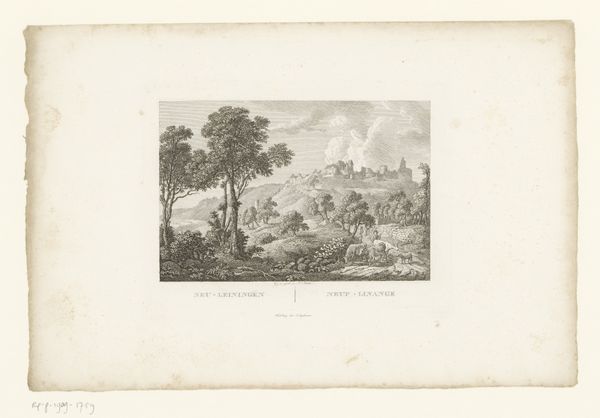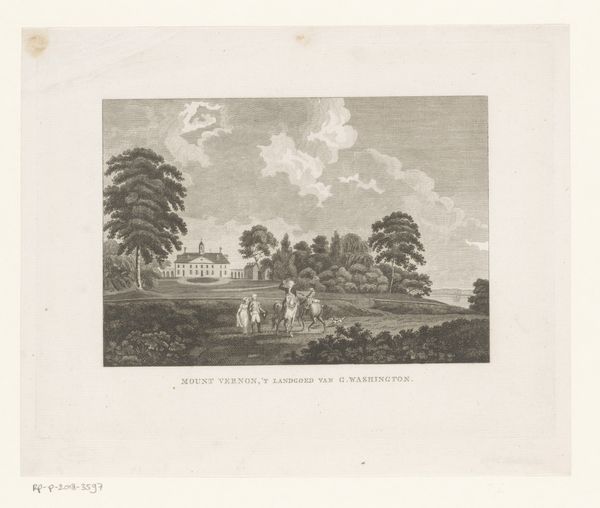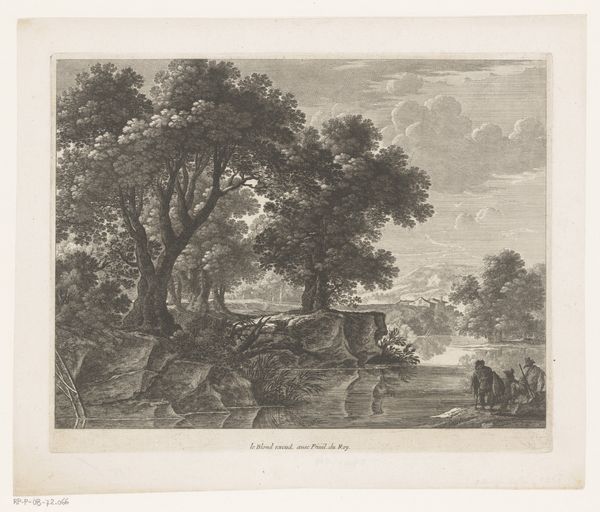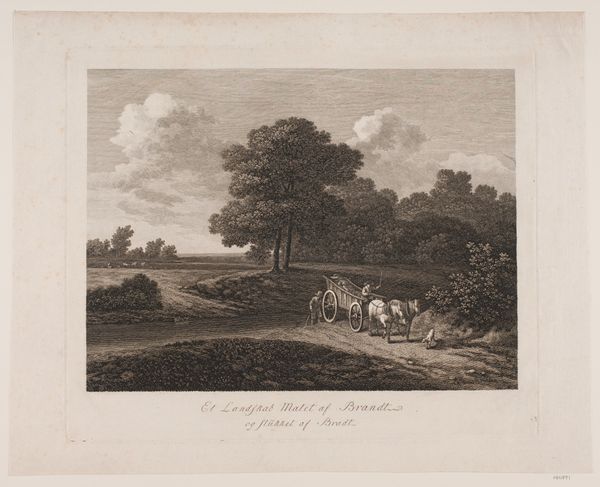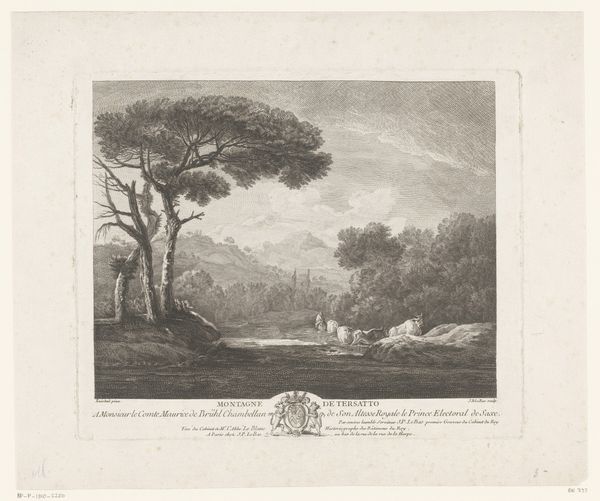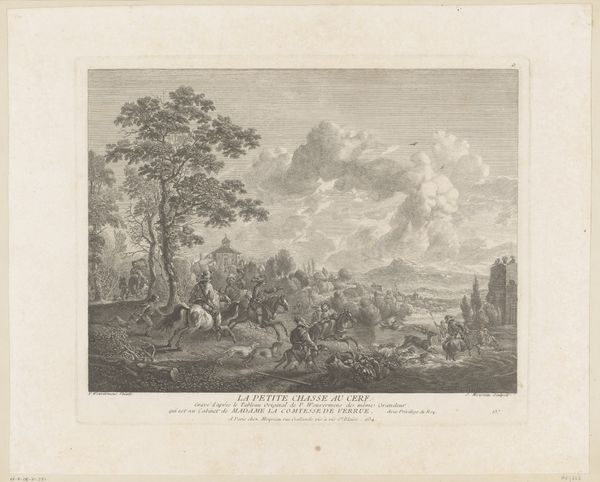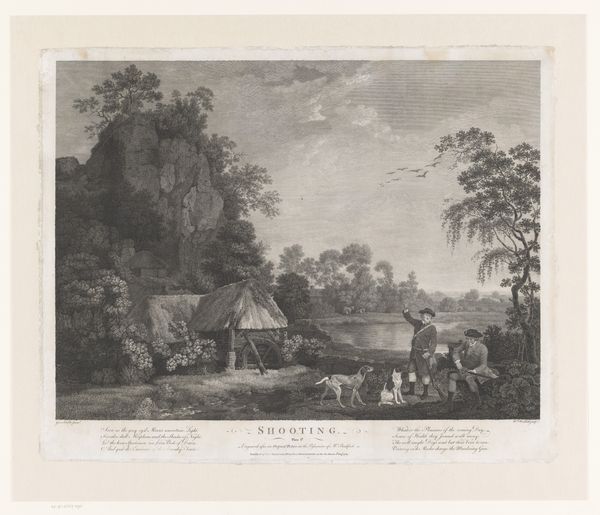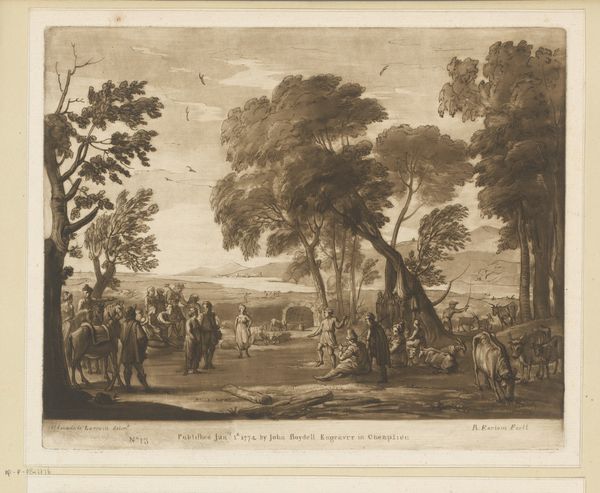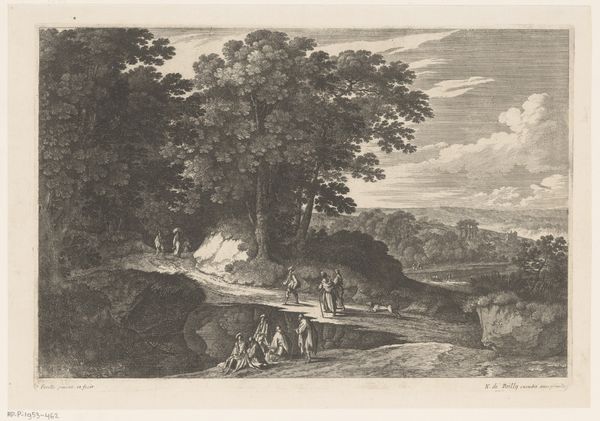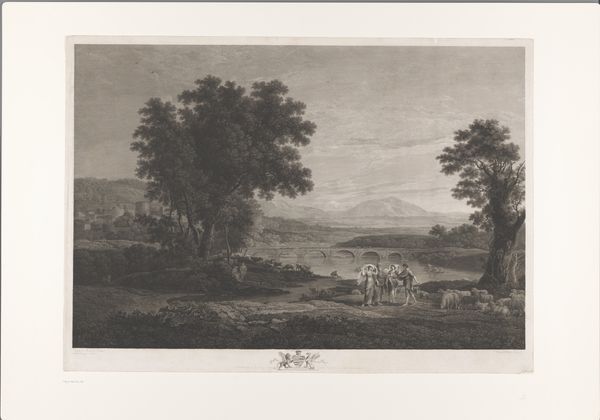
Twee jagers met honden lopen door een veld langs een huis Possibly 1770 - 1778
0:00
0:00
Dimensions: height 450 mm, width 559 mm
Copyright: Rijks Museum: Open Domain
Curator: We are looking at a print titled "Twee jagers met honden lopen door een veld langs een huis," which translates to "Two hunters with dogs walk through a field past a house." It's an engraving by William Woollett, possibly dating from 1770 to 1778, held in the Rijksmuseum collection. Editor: It's remarkable how much Woollett conveys with such limited tonal range! The texture is fantastic. I notice the laid lines in the paper give this print an interesting dimensionality, and the house seems cozy somehow, like the cottage is sheltering something vital. Curator: It's evocative of its time. These idyllic scenes promoted a particular vision of rural life and gentry leisure that became popular among the rising merchant classes. Collecting prints like this allowed people to participate in the culture of the elite. Editor: Indeed, prints like this offer glimpses of the day-to-day realities of both humans and animals, like the energy radiating from those dogs. Can you imagine the collaboration and labor involved? From the engraver to the printer to the shopkeeper, not to mention the source painting if one existed, or the making of the paper itself. Curator: Exactly, and it’s not merely documentation. Look at the composition. The relationship between the hunters and their dogs is foregrounded, yes, but their small figures seem almost overwhelmed by the vastness of the landscape, almost a feeling of insignificance, a concept becoming common during the Romantic era. Editor: I find the materiality almost defiant. Look how that almost severe monochromatic palette can still convey such life, motion, texture… and the human urge to master the land. And consider the relative accessibility of an engraving like this compared to, say, a painting. More people had access to participate, in a small way, in owning some semblance of power over the environment. Curator: Absolutely. These images circulated widely and were influential in shaping perceptions of nature and social hierarchies. Thinking about who was buying them, displaying them, and how, really unlocks another layer of meaning. Editor: Agreed. Thinking about those means of production and consumption really gets you wondering: who really benefits from romanticizing the natural world? And even more, who is doing the labor behind making this beauty? Curator: A powerful reminder that art exists within, and is influenced by, a complex web of historical and social relations. Editor: It’s amazing what a simple hunt scene can reveal when you start to scratch beneath the surface of the materiality!
Comments
No comments
Be the first to comment and join the conversation on the ultimate creative platform.
